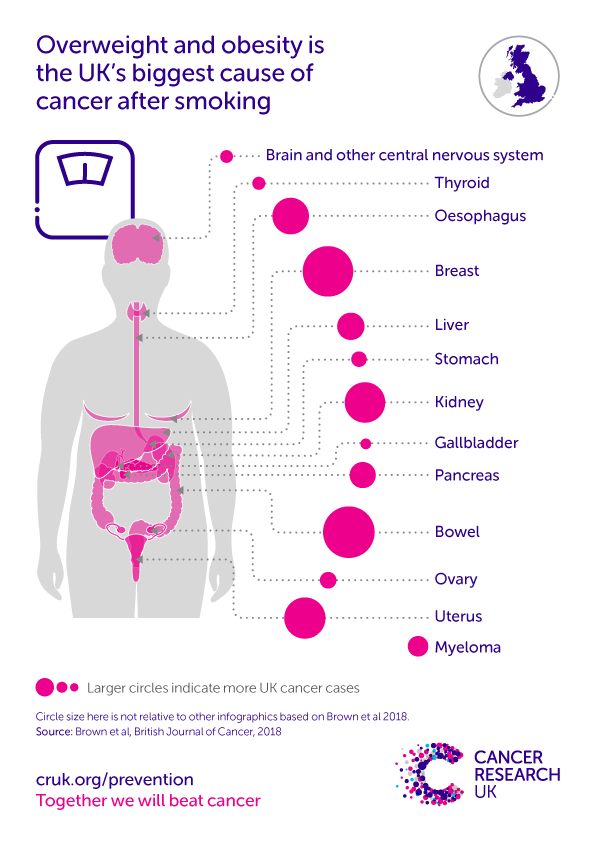Overweight and obesity causes 13 types of cancer: oesophageal, stomach, bowel, liver, pancreas, gallbladder, breast, uterus, ovary, kidney, thyroid, myeloma, and meningioma.
Incidence of some overweight- and obesity-related cancers including uterine, kidney and liver cancer is increasing, at least partly due to increasing prevalence of overweight and obesity. Cancer incidence is expected to rise further if recent trends in overweight and obesity prevalence persist.[1]
Overweight and obesity are major risk factors for the leading causes of death in the world.[2] Overweight and obesity causes an estimated 14% of deaths in Europe, a meta-analysis showed;[3] Overweight and obesity causes 6% of cancer cases in the UK (2015).[4]
UK portrait version shown here. Country versions, cancers caused by other risk factors, and landscape formats are available for free from our cancer risk publications.
See also
Want to generate bespoke preventable cancers stats statements? Download our interactive statement generator. Note this uses 2015 figures and is not compatible with our 2023 smoking figures.
Find out more about the definitions and evidence for this data
More information about our methodology for risk factor evidence
References
- Wang YC, McPherson K, Marsh T, et al. Health and economic burden of the projected obesity trends in the USA and the UK. Lancet 2011;378(9793):815-25.
- World Health Organisation. Obesity and overweight. Accessed March 2019.
- Global BMI Mortality Collaboration. Body-mass index and all-cause mortality: individual-participant-data meta-analysis of 239 prospective studies in four continents. Lancet 2016;388(10046):776-86.
- Brown KF, Rumgay H, Dunlop C, et al. The fraction of cancer attributable to known risk factors in England, Wales, Scotland, Northern Ireland, and the UK overall in 2015. British Journal of Cancer 2018;;118(8):1130-1141.
About this data
Data is for: UK, 2015, ICD-10 C00-C97 excl. C44.


